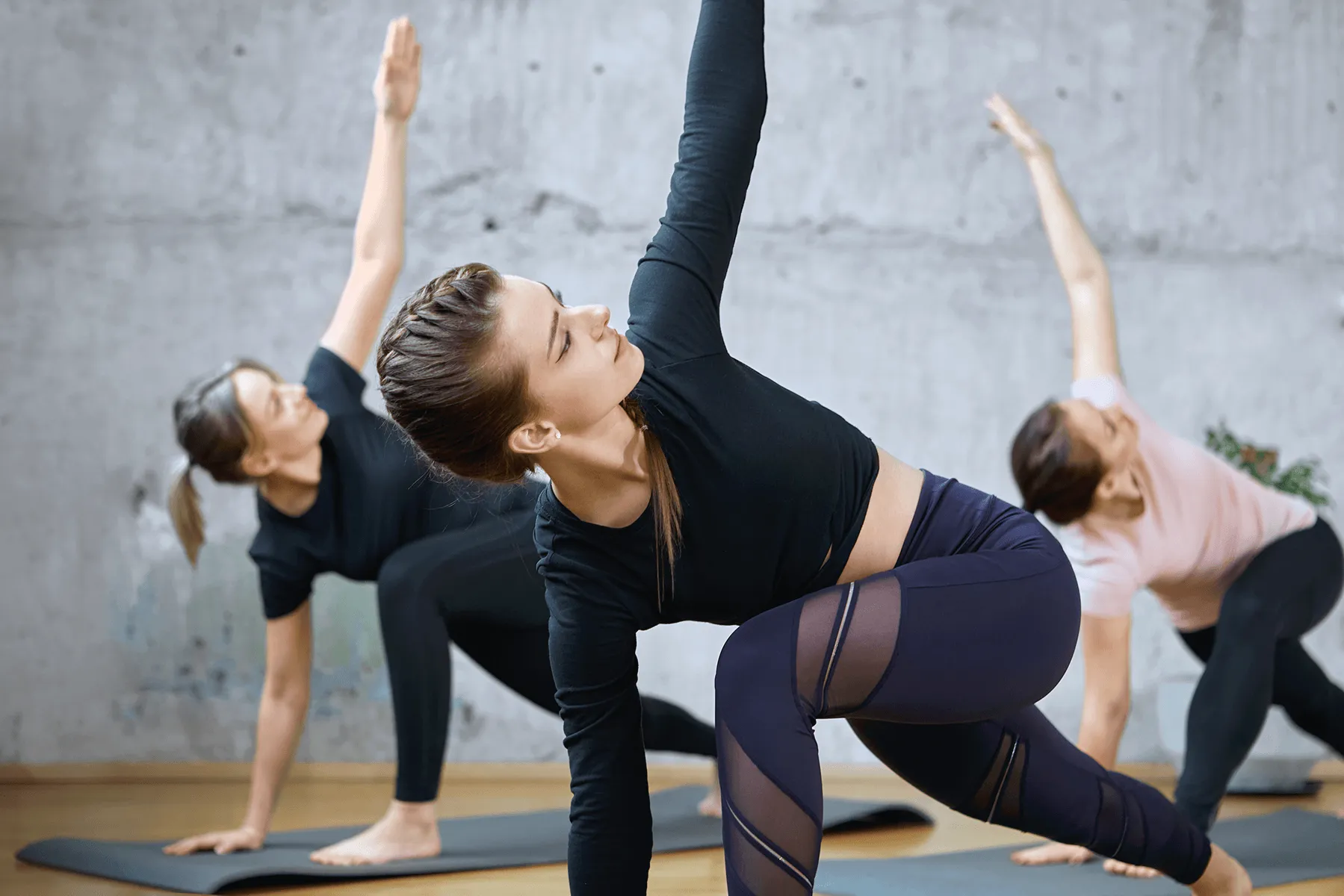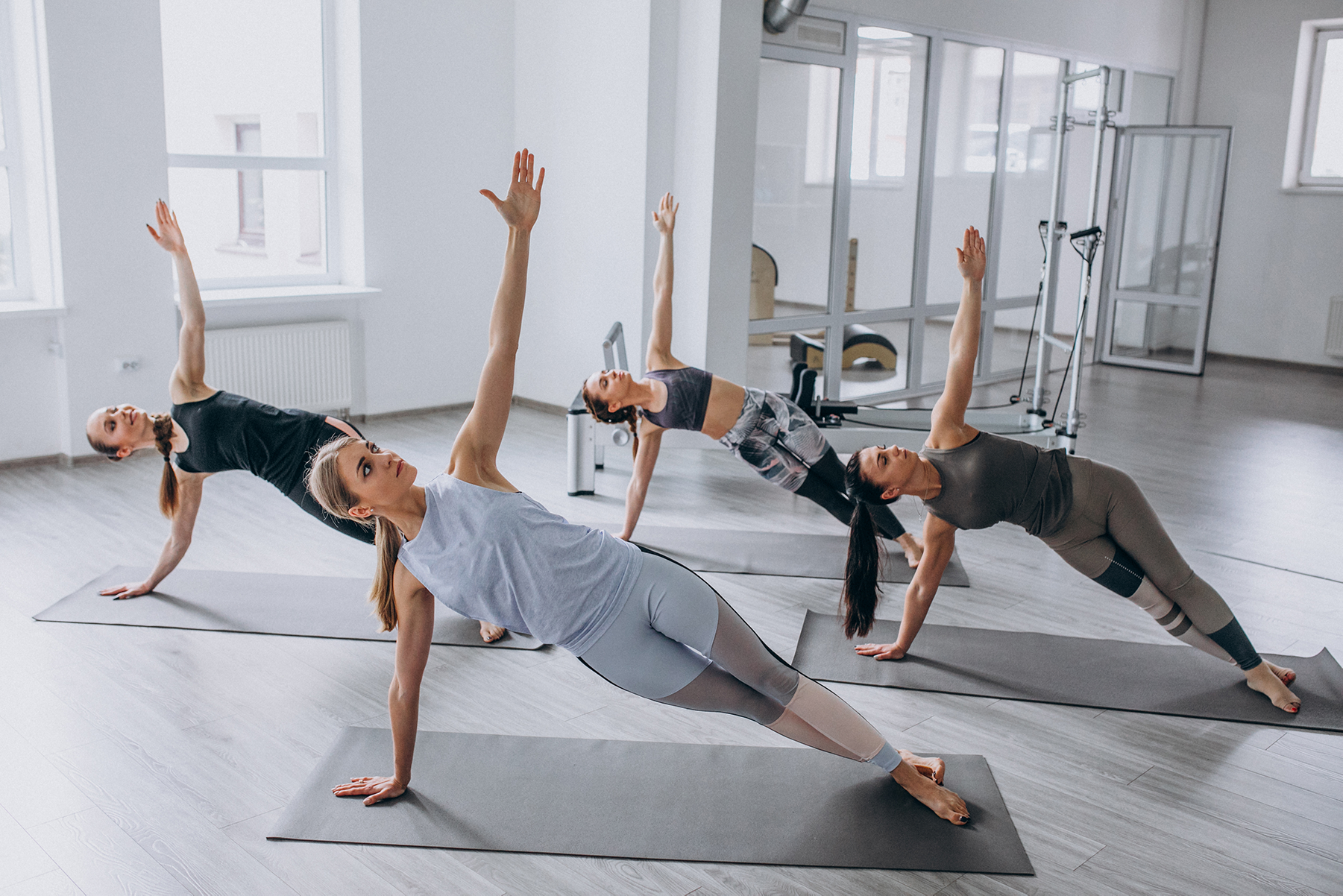

Yoga is an approach to physical and mental health and wellbeing that has been around for thousands of years. According to Sadhguru, the word "yoga" means "that which brings you to reality." Taken literally, the word means "union." Many take this to mean a "union of the body and mind." Some might add "spirit" to the mix.
The word comes from the Sanskrit root word "yuj," which means "union," "integration," or "wholeness."

There are more than 300 million people in the world who practice yoga, according to the Yogi Times and the Economic Times. And roughly half of that number is yoga practitioners from India, but more and more people around the world are coming to yoga for various reasons, including 36 million people in the United States who make yoga a nearly $12 billion industry in the country (Statista). In this Yoga 101 article, you'll learn more about the practice of yoga, different yoga paths and styles, and the benefits of yoga.
To get the best possible understanding of yoga, we encourage you to sign up for a free two-week of myYogaTeacher. Once inside, you'll have two weeks to try more than 35 live online yoga classes every single day from Indian teachers who have a comprehensive understanding of the entire yoga practice. We even offer a Yoga 101 class that you'll probably enjoy if you're here reading this article!

Yoga philosophy tells us that the cause of our suffering is a disconnection from our true self. That's why Vedanta offers four yoga paths to help us reconnect with our true selves. Let's take a look at these four paths of yoga: Bhakti, Jnana, Karma, and Raja.
Bhakti yoga is the path of yoga built on self-realization through devotion. It's typically practiced through kirtans or bhajans (devotional chants) and helps practitioners work through intense emotions by focusing on the divine being.
Bhakti yoga is all about prayer, worship, and ritual that gets the practitioners closer to the spirit, letting the ego and desire go.
Jnana comes from the Sanskrit for "knowledge." This is the path of intellect and wisdom and involves the study of sacred texts as well as contemplation and self-analysis. Those practicing Jnana are seeking to break through illusion to find the true meaning of life.
Jnana yoga is called the "science of the self," by Swami Sivananda and the philosophy of Vedanta teaches self-inquiry to discover your true nature.
Karma means "action." Through Karma yoga, we learn to be kind and compassionate without expecting anything—even kindness and compassion—in return. Karma yoga is practiced through any acts of service when you put others’ needs before your own and feel grounded during these acts.
This practice is "work as worship," cosmic love and tolerance when we act without expectation of personal gain. It is seen as liberating, through selfless service we free ourselves from karmic bonds and find peace.
The fourth path of yoga we're going to talk about is Raja yoga. Raja means "royalty" or "kind" in Sanskrit and balances the three other paths (Bhakti, Jnana, and Karma) to help you find inner peace and self-awareness. While asanas and pranayamas are integral to Raja, the main practice is silent meditation.
This type of yoga is also known as Ashtanga because the practice can be divided into eight limbs:

Now that you have a better understanding of the paths of yoga, let's turn our attention to the styles of yoga that you might find in any yoga studio. Styles of yoga range quite a bit, from power yoga and other demanding classes, to gentle yoga, and more meditative classes.
Some of the styles of yoga have a yoga lineage (like Kriya, Hatha, Ashtanga, and others), but yoga lineage has become less important to practitioners as yoga becomes more readily available to different cultures and people around the world.
This is by no means a complete list of the different styles of yoga. Inside myYogaTeacher, you'll also find offerings like gentle yoga, chair yoga, and therapeutic yoga for things like thyroid, diabetes, and more.
Kriya yoga is an ancient practice that includes pranayama and meditation. Swami Paramahansa Yogananda is the guru known for bringing Kriya yoga to the Western world. This style of yoga uses meditation to lead practitioners to spirituality.
Hatha yoga is a broad term that encompasses yoga styles using asanas (poses). Hatha classes tend to be slower-paced and train practitioners to regulate their breath and meditate while in poses. It's truly a "moving meditation."
Vinyasa yoga uses movement and breath, similar to Hatha. However, Vinyasa tends to be a faster pace and flows through asanas rather than holding them. It's a physically demanding practice without a set structure.
Ashtanga yoga is another physically demanding style of yoga that helps increase flexibility, as well as build strength and stamina. With Ashtanga, practitioners work through the same series of poses every time.
Iyengar yoga was created by B.K.S. Iyengar in the 1960s. This style of yoga focuses on precise movements and alignment. Poses are generally held for a long time and props are used to help practitioners perfect their form or get deeper into poses.
Kundalini yoga is a spiritual and physical yoga practice designed to release the energy trapped in the lower spine. This style of yoga uses fast-paced postures and breathing, chanting, mantra, and meditation. It was introduced in the West during the 1970s by Yogi Bhajan.
Bikram yoga is often called "hot yoga" since it is practiced in a humid, heated room (105º and 40% humidity). It's named after Bikram Choudhury and includes a series of 26 postures, performed twice, in a fast flow. It's a challenging practice that improves endurance and flexibility. As more and more practitioners try to distance themselves from the style's founder, you'll find a deviation from the series of postures as well as room temperatures and humidity.
Yin yoga focuses on seated postures held for long periods of time. It's a slower-paced style of yoga and can be quite meditative. Poses are generally held from 45 seconds to two minutes.
There are several different forms of power yoga but it's always intense and fast-paced. It combines flexibility, strength, concentration, and breathwork into a flowing style and was originally created for athletes.
On the opposite end of the yoga spectrum from power yoga is restorative yoga. This style of yoga focuses on body relaxation and freeing your mind. It borrows pieces from several other yoga styles. Like Iyengar, restorative yoga practice encourages the use of props to encourage complete relaxation through body support. Like Yin, the poses in restorative yoga are held for a long time (though much longer than in Yin).
So far, we've covered the paths of yoga as well as several different styles of yoga. But you may be wondering why you'd practice yoga in the first place.
There have been so many scientific studies about the practice of yoga and its benefits. Those benefits range from physical to mental to emotional. Here are some of the benefits you can expect.
By now, you should have a much better understanding of what yoga is, the paths and styles of yoga, as well as which forms of yoga you might want to check out. To gain access to different styles of yoga, we invite you to sign up for a free two-week trial of myYogaTeacher where you'll find 35+ live online yoga classes of various styles every single day to choose from.

Receive personalized guidance tailored to your unique fitness goals, live with a dedicated coach—no credit card required.